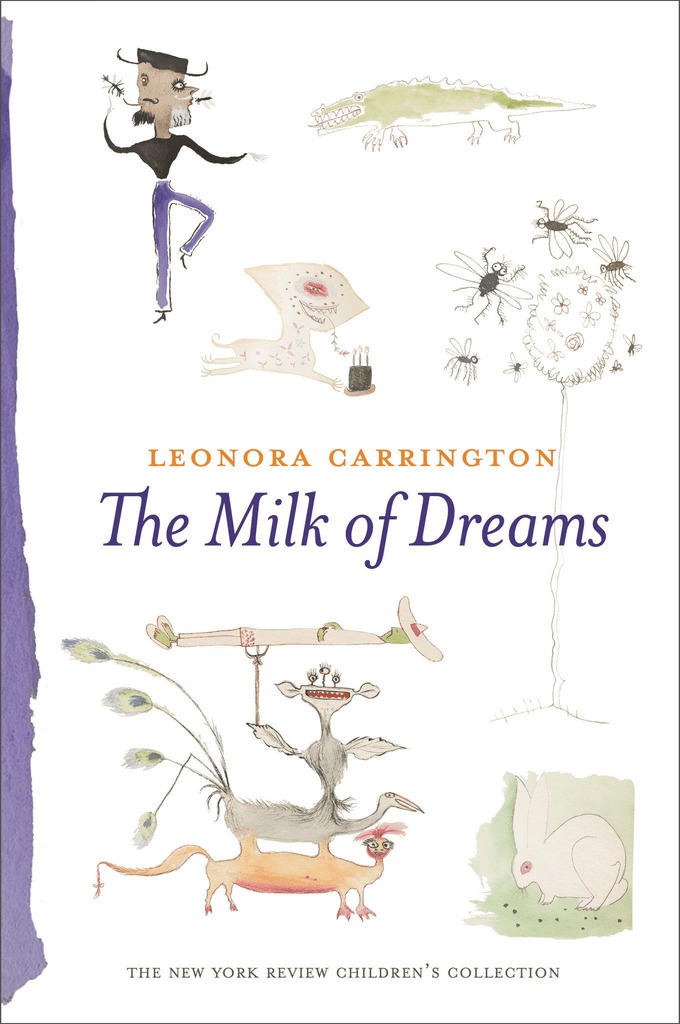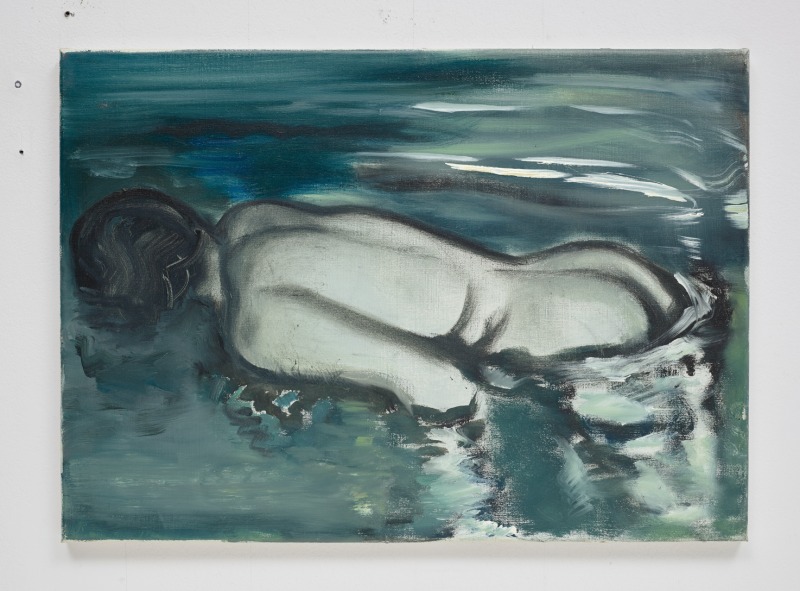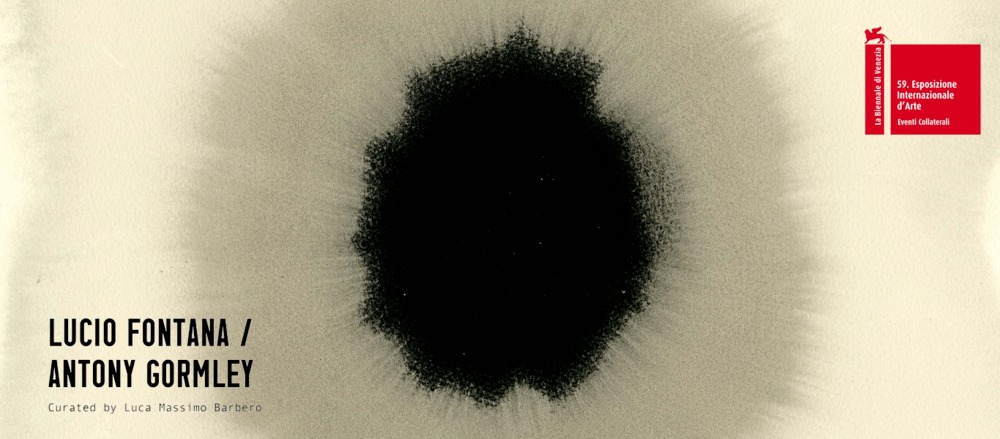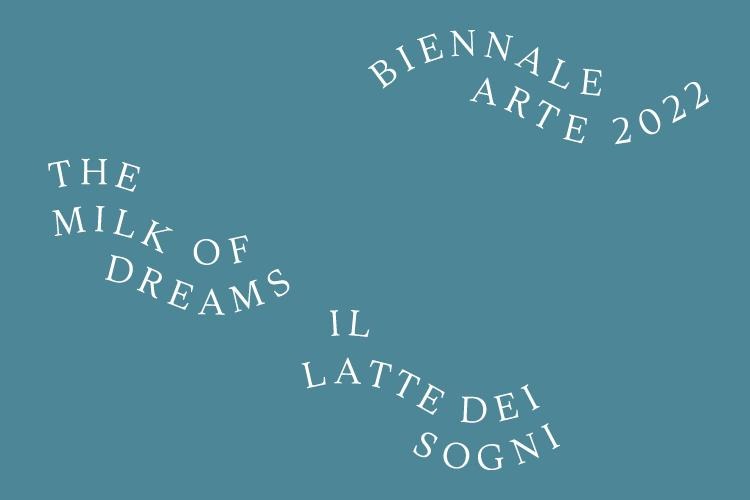
Guide to the 59th Venice Biennale
The 59th edition of the Venice International Art Biennale will take place from April 23 through November 27. This year’s Biennale is curated by Cecilia Alemani (1977), who chose to title the event The Milk of Dreams from surrealist artist Leonora Carrington’s book of the same name. Like Carrington, Alemani invites us to imagine a world in which diversity exists peacefully, be it ethnic, body or gender diversity. In such a world, everyone has the right, the choice, and the opportunity to be, become, transform or morph along their own unlimited trajectory. This world rejects the idea of humans as the most important element of the universe in the same way it rejects racial or gender superiority.
Due to the limiting circumstances of the pandemic, this edition of the exhibition was postponed by a year. In the 127-year history of the Biennale, this precedent has only been set during two World Wars. This year the Biennale will see 80 national presentations, including five new members – the Republic of Cameroon, Namibia, Nepal, the Sultanate of Oman, and Uganda.
The Russian national presentation, featuring artists Kirill Savchenkov and Alexandra Sukhareva, was cancelled after the organisers protested against Russia’s decision to invade neighbouring Ukraine. More importantly, after a remarkable effort by the organisers, Ukrainian artist Pavlo Makov will proudly represent his country in Venice with Fountain of Exhaustion. Acqua Alta (1995-2022).
Arterritory.com presents the following selection of highlights.
Central exhibition
The Milk of Dreams, an exhibition curated by Cecilia Alemani, Artistic Director of the Biennale, on view at the Giardini and the Arsenale
As every Biennale, the event is centred on one main curated exhibition – this time it is The Milk of Dreams, curated by New York-based Italian curator Cecilia Alemani. The title is taken from the fairy-tale book of the same name, written and illustrated by Leonora Carrington (1917–2011), a painter who was a member of the Surrealist movement of the 1930s. The world of phantasmagorical hybrid creations depicted in the storybook is constantly re-examined through the prism of the imagination. In it, every creature has unlimited possibilities to change, to transform, to become someone or something else.
Similarly, Roberto Cicutto, President of the Biennale, highlights the emergence of new harmonies and a hitherto unimaginable coexistence outlined in Alemani’s exhibition that is possible only on the condition of rejecting anthropocentrism. Cicutto describes the exhibition as “a journey at the end of which there are no losers, but where new alliances are brought forth, generated by a dialogue between different beings”.
The companions on this journey, the artists, also come from different worlds. The exhibition will include 213 artists (180 are first-timers at the event) from 58 countries, among whom a significant number are female or gender non-conforming. This selection invites us to reconsider the idea of the male as the centre of the “artistic universe”, while at the same time revealing the diversity, and therefore the richness, of the creative forces of our time. The themes explored by the artists also challenge the fixed idea of the white Western male as the centre of the universe and the measure of all things.
At the forefront of the exhibition Alemani poses the following questions: How is the definition of the human changing? What are our responsibilities towards the planet, other people, and other life forms? And what would the world look like without us? To provide answers, the exhibition explores three themes: the representation of the body and its metamorphoses; the relationship between individuals and technology; and the relationship between humans and planet Earth.
Within the Biennale’s two main exhibition venues in the Giardini and the Arsenale are smaller “time capsule” exhibitions. They offer additional material for research and introspection in which to look for thematic references in the artistic narratives of the past. Incidentally, many of the stories told in these “capsules” are still not included in the official art canon, and have for too long been considered of little importance.
Pavilions of the Baltic States
Photo: Kristīne Madjare
Latvian national exposition Selling Water by the River
By artist duo Skuja Braden
Latvia will be represented at the world art event by the artist duo Skuja Braden, aka Ingūna Skuja (LV) and Melissa Braden (USA). The duo’s artistic practice is based on porcelain and is characterised by a fusion of decorative styles and the influence of Japanese art prints from the Edo period. Skuja Braden’s work develops literary and art historical themes based on the artists’ experiences of contemporary political and social events.
Reflecting on the possibilities of coexistence in a world torn by disagreement, the exhibition presents objects created over more than 20 years of cooperative work as well as spectacular large-scale new works. The pavilion’s large-scale multimedia installation brings together more than 300 porcelain works – the smallest of which is the size of an eyeball, whereas the largest one weighs one tonne.
The exhibition’s key message: everything we need has already been given to us. In this Zen Buddhist-inspired message, the artists see the possibility of an inclusive society open to diversity as symbolised by water, the element that unites all living things and is the origin of life itself.
Commissioner: Solvita Krese (Latvian Centre for Contemporary Art). Curators: Solvita Krese, Andra Silapētere.
Location: Arsenal
Lithuania’s national exposition Gut Feeling
Artist: Robertas Narkus
Lithuania is participating in the Venice Biennale with a site-specific installation by artist Robertas Narkus done in collaboration with scientists, Venetians, and local small businesses. The work was created in one of the last piazzas in the Castello district of Venice that has not yet been affected by gentrification. Narkus has created this social sculpture* project as a replica of capitalist production structures and a deliberately hyperbolic reflection of our time.
The installation is made of special seaweed collected from the local lagoon waters. The kelp species Undaria pinnatifida is an invasive plant that, as a result of globalisation, has spread from Asia westwards to the Adriatic Sea. It is one of the most nutritious and rapidly renewable food sources, and has the potential to solve the imminent food shortage being faced by the Earth’s rapidly growing population.
* The term “social sculpture” was coined by the artist and theorist Joseph Beuys to refer to the potential of art to transform society through interdisciplinary dialogue – Ed.
Commissioner: Kęstutis Kuizinas. Curator: Neringa Bumblienė
Locations: Castello 3200; 3206, Campo de le Gate

Estonia’s national exposition Orchidelirium: An Appetite for Abundance
Artists: Kristina Norman and Bita Razavi
Estonia is being represented at the Venice Biennale by Kristina Norman and Bita Razavi with their collaborative work inspired by the watercolours of tropical plants by Estonian artist Emily Rosaly Saal (1871-1954). In their exhibition, the two artists have created a synergy between new works and the legacy of art history to provide a multifaceted insight into colonial history and its problematics.
The artists used as source material Saal’s collection of images of plants from various parts of the Dutch East Indies and later the Kingdom of the Netherlands – in total, around three hundred images of tropical flowers, fruits and vegetables.
“Emilie Saal’s works, which show flowers always in bloom and tropical fruits perfectly ripe, are not images of real plants, but rather idealised paintings of them. She used standard iconography in Europe at the time to bring together multiple plants in one place, and to compress space and time to include the information botanists wanted in their images. Our project encourages a similar approach to complicating the definitions of nationality, belonging, and colonial exploitation (which was once deemed ‘exotic’) that have developed throughout history”, says Corina L. Apostol, curator of the exhibition. Artist Kristina Norman stresses that the project is quite critical of the notion of uniqueness: “The search for unique natural objects and ‘the exotic’ has fuelled capitalist greed for centuries. The habit of collecting the unusual in the colonies and then displaying it in the zoos and botanical gardens of imperial metropolises is at the root of species extinction.”
Commissioner: Maria Arusoo (Estonian Centre for Contemporary Art). Curator: Corina L Apostol
Location: Giardini
Sigurður Guðjónsson, Perpetual Motion (still), 2022. Courtesy of the artist and BERG Contemporary
Iceland’s national exhibition Perpetual Motion
Artist: Sigurður Guðjónsson
This year Iceland’s pavilion is at the Arsenale, a first for the country at that location. Contemporary artist Sigurður Guðjonsson’s exhibition presents a multisensory sculpture that challenges perceptual mechanisms, activates space, and creates an immersive and meditative experience for visitors.
“Perpetual Motion will be staged as a split-screen installation, featuring a six-metre-high vertical screen connected to a large-scale floor projection. The screens will depict the constant drift of metal dust, amplified and magnified through the artist’s camera lens. Visitors can immerse themselves in the movement of the abstract material as it warps and distorts, suggesting new shapes and imagery”.
Commissioner: Auður Jörundsdóttir (Icelandic Art Center). Curator: Mónica Bello
Location: Arsenale
A photo render of the Ukrainian Pavilion project at the 59th Venice Art Biennale. The main exhibit is Pavlo Makov’s “Fountain of Exhaustion. Acqua Alta” on the right. (Forma)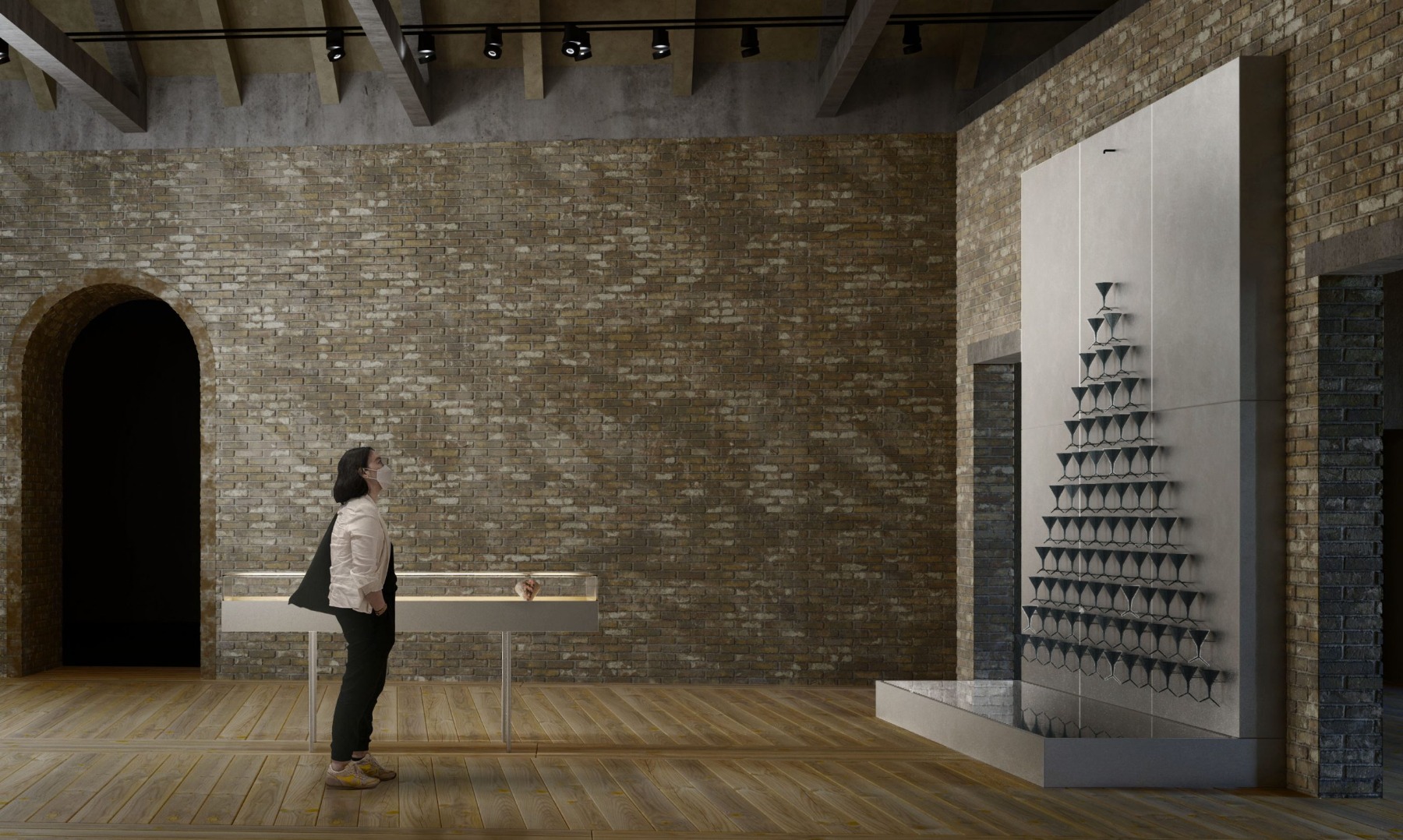
Ukraine’s national exposition The Fountain of Exhaustion. Acqua alta
Artist: Pavlo Makov
The day after the Russian State invaded Ukraine, Kiev-based curator Maria Lanko put three boxes of steel funnels in the boot of her car and headed west. Milan was the final destination on her mission to safely transport artist Pavlo Makov’s Fountain of Extinction, Acqua Alta (1995-2022), the country’s national exposition at the Venice Biennale. The creators of the Ukrainian exhibition succeeded – the fountain, a twelve-level pyramid of 78 steel funnels, will be on display for visitors.
The work was created as Makov’s response to the mismanagement of water in his city in 1995, but has been extended conceptually over time to also encompass the global theme of climate change, an issue that is acutely felt in Venice where peak tides, or aqua alta, are regularly experienced.
Commissioner: Kateryna Chuyeva (Deputy Minister for European Integration of the Ministry of Culture and Information Policy of Ukraine). Curators: Lizaveta German, Maria Lanko, Borys Filonenko
Location: Arsenale
France’s national exposition: “Les rêves n’ont pas de titre / Dreams have no titles”
Artist: Zineb Sedira
France is being represented at this year’s Biennale by Paris-born Algerian Zineb Sedira. Sedira has played an important role in expanding the discourse of contemporary art in terms of exploring controversial historical narratives and different alternatives to the stories of colonialism. Initially inspired by her own search for identity, Sedira has gradually shifted these autobiographical reflections towards more universal ideas of mobility and the transfer of memories.
The centrepiece of the exhibition is the 16 mm film Les rêves n’ont pas de titre, which explores Third World Cinema – militant, anti-capitalist, anti-colonial films made in Algeria in collaboration with international filmmakers in the post-independence period after 1962. Sedira’s new work focuses mainly on Algerian co-productions with France and Italy. She has created remakes from film fragments, and has essentially made a film about film-making. As the artist’s work is mainly autobiographical, the film also features her friends, family and colleagues, including the exhibition’s curators, Sam Bardaouil and Till Fellrath. The work is dedicated to Italian director Gillo Pontecorvo’s The Battle of Algiers (1966), which won the Golden Lion at that year’s Venice Film Festival.
In an interview with Curtain Magazine conducted by the French exposition’s curators, Sam Bardaouil and Till Fellrath, Sedira, who was born in Paris of Algerian parents and is now based in London, aptly says: “This question of ‘do I deserve representing France’ was an interesting one, because that was exactly the right thing to be doing, to show that the French pavilion can also be Algerian, and can also be British as much as it can be French...I’m French, I’m British, and I’m also Algerian”.
Commissioner: Institut Francais. Curators: Yasmina Reggad, Sam Bardaouil, Till Fellrath
Location: Giardini
Satellite exhibitions
Marlene Dumas, Losing (Her Meaning), 1988. Pinault Collection. Paris, France. Photo: Peter Cox, Eindhoven
Marlene Dumas: Open-end
Palazzo Grassi, March 27 – January 8, 2023
Cape Town-born Marlene Dumas is considered one of the best-known and most influential artists in the Western world. Marlene Dumas’ work is centred on portraiture – a universal representation of suffering, ecstasy, fear and despair. Her work also often deals with existential themes, and invariably echoes historical motifs and current political events. An important aspect of her work is the use of incidental images – everything from newspaper and magazine pictures, TV newsreels and film stills to Polaroid snapshots she has taken herself.
This monographic exhibition brings together more than 100 of Dumas’ works, with a focus on paintings and drawings she’s created between 1984 and the present day. Among them are also previously unseen works created in the last few years.
The exhibition is part of Palazzo Grassi’s series of monographic exhibitions dedicated to contemporary artists, launched in 2012.
Exhibition curator: Caroline Bourgeois
Anish Kapoor, Dark Brother, 2005. Mixed media and pigment / Museo d’Arte Contemporanea Donna Regina, Naples / ©Anish Kapoor. All rights reserved DACS, 2021
Anish Kapoor
Gallerie dell’Accademia and Palazzo Manfrin, April 20 – October 9
Of Indian origin, London-based Anish Kapoor is one of the greatest sculptors of his generation. His signature has always been the gigantic scale and simplicity of his objects, a technique that shatters almost all possible perceptions.
The exposition at Gallerie dell’Accademia is supplemented with an accompanying show at yet another prestigious venue, the historic Palazzo Manfrin in Venice’s Cannaregio district. The exhibitions combine older and newer works by the sculptor, including the premiere of Kapoor’s long-awaited works featuring the super-black material Vantablack. This is the first time that the public will have the opportunity to see the 99.96% light-absorbing Vantablack S-VIS material as used in art. Kapoor owns the exclusive rights to use Vantablack, a still-controversial subject in the art world.
The exhibition also includes the artist’s Void series of sculptures utilising blue and red pigments, which were exhibited in the British pavilion at the 1990 Venice Biennale and garnered him the Turner Prize in 1991.
Curator: Taco Dibbits
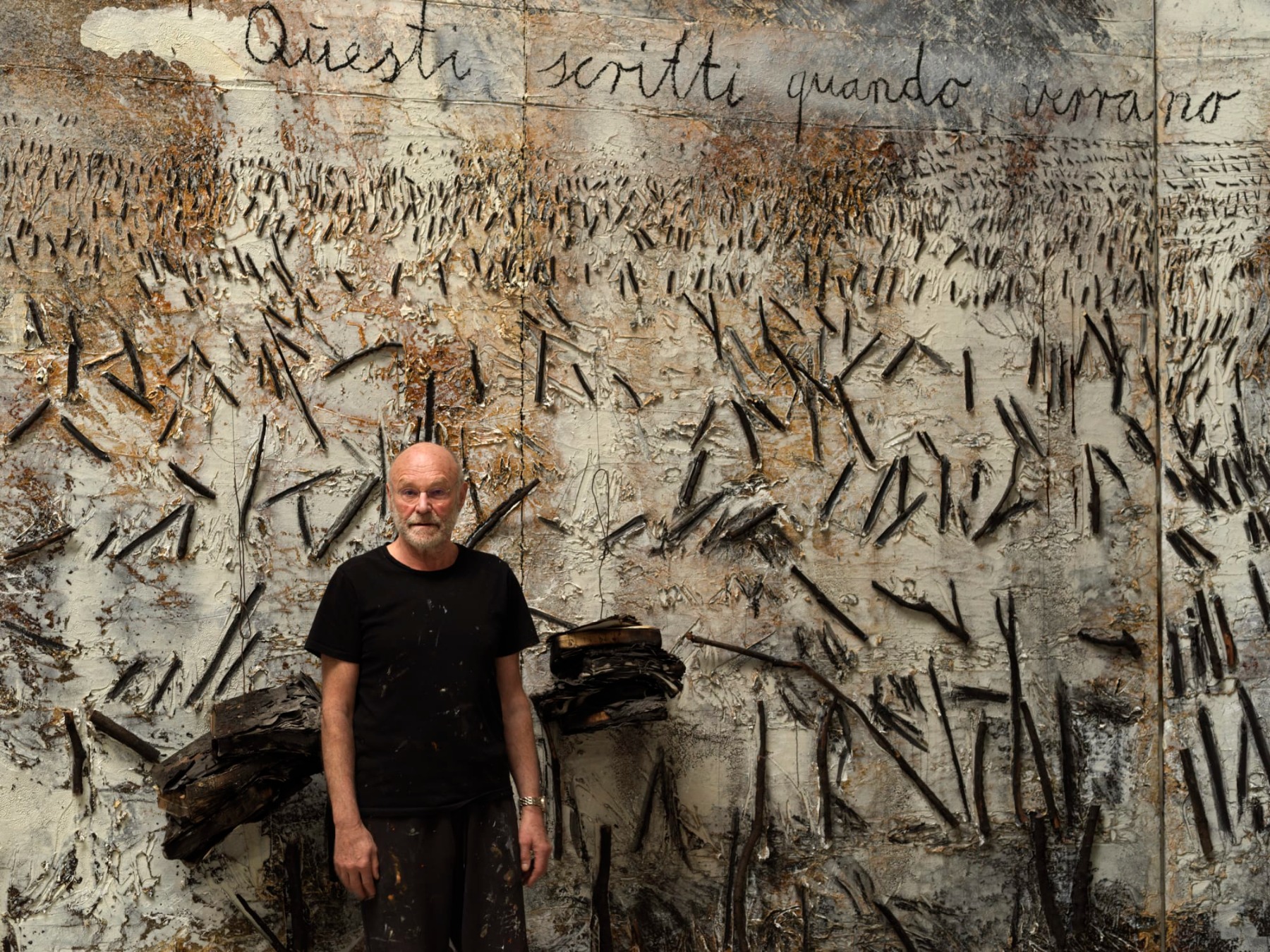
Anselm Kiefer
Palazzo Ducale, March 26 – October 29
German artist Anselm Kiefer has created a large-scale site-specific installation of paintings in one of the most richly decorated halls of Doge’s Palace, the Sala dello Scrutinio. The walls of the hall are practically a chronicle of Venice’s emergence as a metropolis and subsequent flourish, which is why it was no surprise that the opening of the installation was also a part of the 1600th anniversary celebrations of the founding of Venice. Kiefer’s series of paintings made in 2020/21 create a dialogue-in-space with the thirty-three monumental ceiling paintings by masters of their time such as Tintoretto, Palma il Giovane and Andrea Vicentino. The exhibition highlights the role of contemporary art in reflecting universal themes and proposing current philosophical perspectives.
Curators: Gabriella Belli, Janne Sirén
www.palazzoducale.visitmuve.it
Ugo Rondinone: burn shine fly
Scuola Grande di San Giovanni Evangelista,
April 20 – September 17
Swiss-born artist Ugo Rondinone, whose signature elements are typically a combination of psychedelia, advertising, and everyday life, has created sculptures in dialogue with one of Venice’s oldest and most important buildings, the 13th-century Scuola Grande di San Giovanni Evangelista.
The title of the exhibition, burn shine fly, is derived from a book of poems by the artist’s late partner, the American poet John Giorno (1936-2019), entitled YOU GOT TO BURN TO SHINE (1994).
Rondione created these works that seemingly contrast with the architectural space they’re place in for previous exhibitions at venues that include the Palace of Versailles and Rockefeller Center in New York.
Curator: Javier Molins
Joseph Beuys. Backrest for a fine-limbed person (hare-type) of the 20th Century AD, 1972-1982 / Photo Farbanalyse.de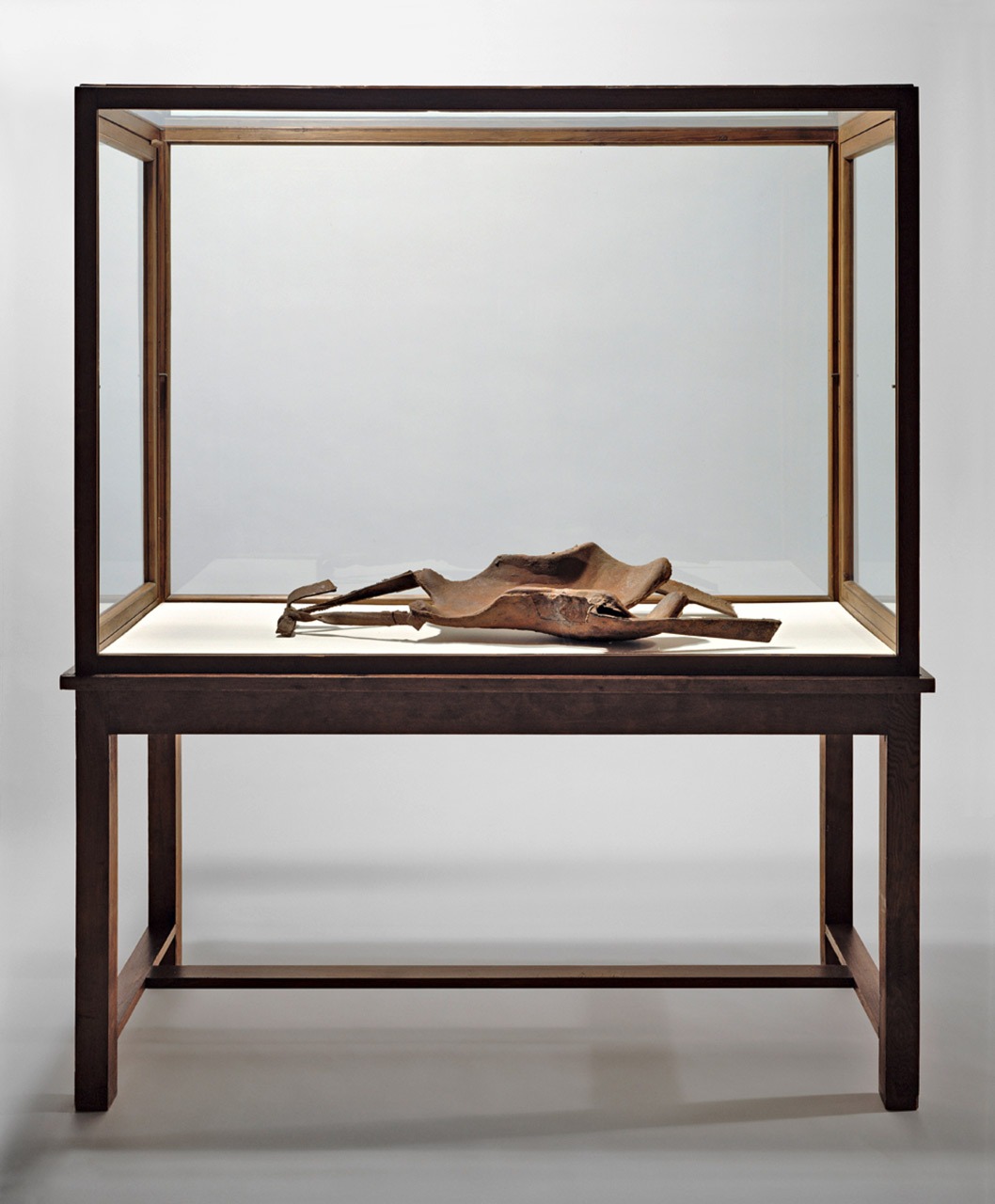
Joseph Beuys. Finamente Articolato
Palazzo Cini, April 20 – October 2
Palazzo Cini presents a retrospective exhibition of Joseph Beuys (1921-1986), the most influential German artist of the second half of the 20th century. His life story and his view of life have always gone hand in hand with his work. Beuys saw art as a positive force capable of awakening individual creativity as well as activating political consciousness and stimulating social change.
The exhibition features a selection of around 40 works by Beuys, and focuses on two of his main subjects of study: humans and their bodies; and the symbolic role of the animal in the artist’s own visual and conceptual world.
Curator: Luca Massimo Barbero
Bruce Nauman: Contrapposto Studies
Punta Della Dogana, through November 27
The American artist Bruce Nauman has never limited himself to any one form of art. In a career that has spanned more than 50 years, he seems to have embraced every possible artistic medium, fusing and expanding different genres as well as inventing new ones. This exhibition offers a glimpse into Naumann’s work, both older and more recent, which has not been exhibited in Europe before.
The centrepiece of the exhibition is a series of recent video installations in which Nauman revisits his earliest work, the single-channel video Walk with Contrapposto, made in 1968 and with the technology available at the time. The video shows the artist walking through a narrow wooden corridor while trying to maintain the contrapposto pose.
The exhibition brings to the foreground three fundamental aspects of Nauman’s work: the artist’s studio as a creative space, the body as a performance tool, and the exploration of sound.
Curators: Carlos Basualdo, Caroline Bourgeois
Lucio Fontana / Antony Gormley
Negozio Olivetti, April 20 – November 27
An exhibition of works by two great masters of sculpture – Argentine-born Italian artist Lucio Fontana (1899-1968) and British artist Sir Antony Gormley (1950) – will take place concurrently with the Venice Biennale.
Curated by art historian Luca Massimo Barbero, the exhibition will be held in a rather unusual space: Negozio Olivetti, the most famous showroom of the 20th century, located in St. Mark’s Square and designed by Italian architect Carlo Scarpa. The space is perfect for two artists of form whose work is largely characterised by their use of light and space. The exhibition focuses on a collection of drawings and prints by both artists.
Curator: Luca Massimo Barbero
Human Brains
Fondazione Prada, April 23 – November 27
Curated by German curator Udo Kittelmann, the exhibition focuses on research into the human brain. The show’s aim is to translate the history of the study of human thought, as well as current research in neuroscience, in the form of a comprehensive exhibition.
Curator: Udo Kittelmann
